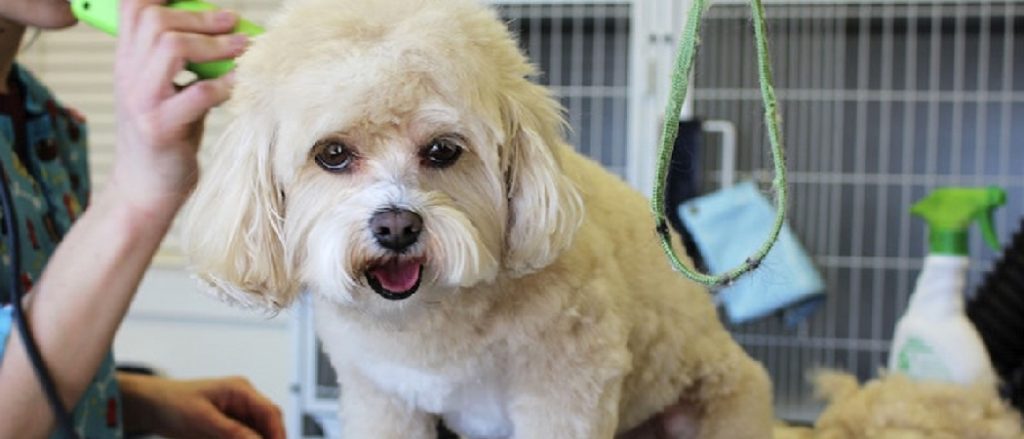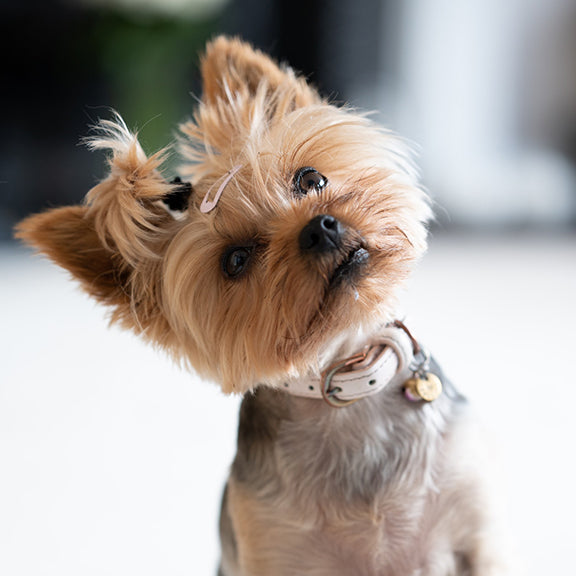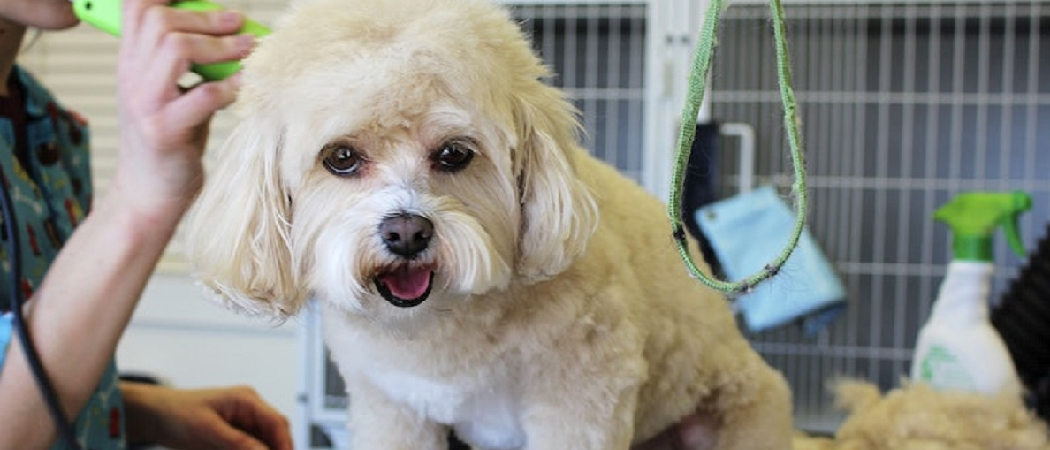After grooming, dogs may act weird for a few hours to a day.


Credit: www.reddit.com
Understanding The Grooming Process
After grooming, it’s natural for your dog to act strange for a short period. However, the length of time can vary depending on the individual dog and their comfort level with the process. Be patient and allow your furry friend some time to adjust and return to their usual behavior.
As pet owners, we all want our furry friends to look their best and feel comfortable in their own skin. Grooming plays a crucial role in not only maintaining their appearance but also promoting their overall health and well-being. However, after a grooming session, you may notice that your dog acts a bit different than usual. Understanding the grooming process and the factors that influence dog behavior after grooming can help you make sense of your pet’s behavior and ensure their happiness.
Types Of Grooming Procedures
There are various grooming procedures that your dog may undergo, depending on their breed, coat type, and specific needs. Understanding these procedures can give you insights into why your dog may be acting weird after grooming:
| Grooming Procedure | Description |
|---|---|
| Bathing | Using water and pet-safe shampoos to cleanse your dog’s coat and remove dirt, debris, and odors. |
| Brushing | Removing tangles, mats, and loose hair from your dog’s coat, promoting healthy skin and preventing excessive shedding. |
| Trimming | Trimming your dog’s hair to achieve a desired length, ensuring their coat doesn’t become too unruly or uncomfortable. |
| Nail trimming | Cutting your dog’s nails to an appropriate length, preventing discomfort and potential injury caused by overgrown nails. |
| Ear cleaning | Gently cleaning your dog’s ears to remove dirt, wax buildup, and prevent infections. |
| Tooth brushing | Brushing your dog’s teeth to maintain good oral hygiene and prevent dental issues. |
Factors Influencing Dog Behavior After Grooming
The grooming process can be quite different for each dog, and several factors can contribute to their behavior changes afterward:
- Personal Sensitivity: Each dog has a unique temperament and sensitivity level. Some dogs may find certain grooming procedures uncomfortable or stressful, causing them to act weirdly afterward.
- Novelty: For many dogs, grooming may be a new experience or one they are not regularly exposed to. The unfamiliarity of the process can temporarily disrupt their usual behavior.
- Physical Discomfort: Certain grooming procedures, such as nail trimming or ear cleaning, can cause mild discomfort or sensitivity, leading to temporary changes in behavior.
- Emotional Response: Dogs are highly perceptive animals. If they sense your own emotions, such as stress or anxiety, during the grooming process, they may mimic the emotions and exhibit unusual behavior afterward.
- Adjustment Period: Like humans, dogs may need some time to readjust and get used to the changes in their appearance and the sensations associated with grooming.
Keep in mind that weird behavior after grooming is usually temporary and should normalize within a short period. However, if you notice any signs of persistent distress or discomfort in your dog, it is essential to consult with a professional groomer or your veterinarian to ensure their well-being.

Credit: www.facebook.com
Common Behavioral Changes After Grooming
After a grooming session, it’s not uncommon for your furry friend to exhibit some behavioral changes. These changes can range from temporary anxiety and stress to physical discomfort and alterations in energy levels and appetite. Understanding these common behavioral changes can help you provide the necessary support and care for your dog during this post-grooming period.
Temporary Anxiety And Stress
Just like humans, dogs can experience temporary anxiety and stress after grooming. The unfamiliar surroundings, the presence of other dogs, and the grooming process itself can all contribute to this temporary discomfort. Some signs of anxiety and stress in dogs after grooming include:
- Restlessness and pacing
- Panting excessively
- Whining or whimpering
- Excessive licking or grooming
It’s important to create a calm and soothing environment for your dog after grooming. Provide a quiet space for them to relax and reassure them with gentle words and petting. Additionally, consulting with a professional groomer who specializes in minimizing stress during the grooming process can help alleviate anxiety.
Physical Discomfort
Grooming often involves various physical activities such as bathing, brushing, and nail trimming, which can sometimes lead to physical discomfort for your dog. Some common signs of physical discomfort after grooming are:
- Itching or scratching excessively
- Redness or irritation in the skin
- Pain or tenderness in certain areas
- Sensitivity to touch
If you notice any signs of physical discomfort, it’s important to address them promptly. This may involve using soothing products recommended by your groomer or consulting with your veterinarian for appropriate treatment. Regular grooming sessions with experienced professionals can help minimize the chances of physical discomfort.
Changes In Energy Levels And Appetite
Grooming can sometimes result in changes in your dog’s energy levels and appetite. These changes may be influenced by factors such as stress, physical exertion during grooming, or even the use of certain grooming products. Some common behavioral changes related to energy levels and appetite after grooming include:
- Increased or decreased appetite
- Lethargy or increased restlessness
- Changes in sleep patterns
- Decreased interest in food or treats
It’s important to closely monitor your dog’s energy levels and appetite after grooming. If you notice any significant changes, it’s advisable to consult with your veterinarian to rule out any underlying health issues. Providing a balanced diet and maintaining a consistent exercise routine can also help regulate your dog’s energy levels and appetite.
Managing And Supporting Your Dog After Grooming
Grooming plays a crucial role in maintaining the overall health and appearance of your beloved furry companion. However, it’s not uncommon for dogs to act a little strange or out of sorts after a grooming session. As a responsible pet owner, it’s important to understand how to manage and support your dog during this period of adjustment. By creating a calm environment, providing comfort and reassurance, and monitoring for any abnormal or prolonged behavior, you can help your dog feel at ease and ensure a smooth transition after grooming.
Creating A Calm Environment
After grooming, your dog may feel a bit disoriented or anxious. To help them relax and settle back into their usual routine, it’s important to create a calm environment at home. Here are a few tips:
- Avoid loud noises or sudden movements that may startle your dog
- Dim the lights or draw the curtains to create a peaceful atmosphere
- Provide a comfortable and quiet space where your dog can rest
By proactively setting a calm ambiance, you can help your dog feel secure and supported during this transitional period.
Providing Comfort And Reassurance
During the post-grooming phase, your dog may appreciate some extra comfort and reassurance from you. Here are a few ways you can provide that:
- Offer gentle petting and soothing words to help them feel loved and reassured
- Provide their favorite blanket or bed for a sense of familiarity
- Engage in low-key activities such as gentle play or cuddling
Remember, your presence and affection can go a long way in helping your dog adjust and feel safe after grooming.
Monitoring For Any Abnormal Or Prolonged Behavior
While it’s normal for dogs to act a bit differently after grooming, it’s important to monitor their behavior for any abnormal or prolonged signs of distress. Here are a few warning signs to watch out for:
| Abnormal Behavior | Prolonged Behavior |
|---|---|
| Excessive panting or drooling | Refusal to eat or drink for an extended period |
| Restlessness or excessive pacing | Continuous scratching or licking |
| Aggression or unusual irritability | Unusual lethargy or weakness |
If you notice any of these behaviors persisting or worsening over time, it’s important to consult with your veterinarian for further evaluation.
By proactively managing and supporting your dog after grooming, you can ensure a smooth and stress-free transition for your furry friend. Creating a calm environment, providing comfort and reassurance, and monitoring for any abnormal or prolonged behavior are essential steps in helping your dog adjust and feel their best.

Credit: prideandgroom.com
Frequently Asked Questions Of How Long Will My Dog Act Weird After Grooming?
How Long Will My Dog Act Weird After Grooming?
After grooming, dogs may appear different for a few hours up to a day. The length of time can vary depending on the dog’s temperament and the type of grooming they received. It’s normal for dogs to feel a bit disoriented or tired after grooming due to the new smells and sensations they experience.
Just give them some time to adjust, and they’ll be back to their normal selves soon.
Why Does My Dog Act Differently After Grooming?
Dogs may act differently after grooming because the process can be stressful for them. Grooming involves being handled by unfamiliar people and being exposed to new sounds and smells. Additionally, dogs may feel physically uncomfortable after grooming, especially if they had haircuts or other procedures.
It’s important to be patient with your dog and provide reassurance during this time.
How Can I Help My Dog After Grooming?
To help your dog after grooming, create a calm and comfortable environment for them at home. Keep them in a quiet room with familiar bedding and toys. Offer them fresh water and a small meal if they’re hungry. Spend some time with your dog, engaging in low-key activities like gentle petting or playing.
This will help them relax and feel safe after the grooming experience.
Conclusion
After grooming, it is common for dogs to exhibit behavioral changes, which may last for a few hours to a couple of days. These changes can include unusual behavior such as excessive licking, hiding, or being more reserved than usual.
It is important to remember that each dog is unique, and their reaction to grooming can vary. It is crucial to give them the time and space they need to adjust and provide reassurance and comfort during this period. Keeping a consistent grooming routine can help dogs adapt and minimize any post-grooming weirdness.
Understanding your dog’s individual needs and allowing them the necessary time and support will ensure a smooth and stress-free grooming experience.


